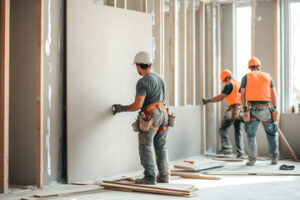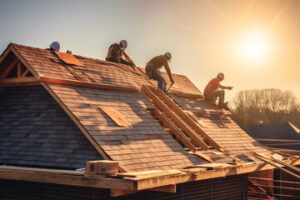How to Choose a Painting Company
Choosing the right Modesto Painting Company can have a profound impact on your home improvement project. Hiring an unreliable or inexperienced painter can result in costly mistakes and a less than perfect finish.

Nurturing relationships over time means checking in regularly, even if there isn’t an immediate project to talk about. Using CRM systems helps streamline communication and gives clients real-time updates on their painters’ progress.
If you’re hiring a professional painting contractor, it’s important to make sure they’re licensed and insured. This protects you and the company from potential accidents or damage during the project. It also means the painter will adhere to the quality standards required by the state, which is a big benefit.
Licensing regulations vary by state, but typically require painters and contractors to pass rigorous testing and prove their expertise before they can be licensed. Many states also require insurance and bonding as well. The licensing and insurance requirements can help you weed out unqualified or unscrupulous painting contractors.
The best way to find out whether a painting company is licensed and insured is by asking them directly. Most reputable painting companies will be happy to provide this information, and if they don’t, it might be a sign that they’re not a good fit for your project.
In addition to a painting contractor’s license, they should have liability and workers’ compensation insurance policies. These protect you in case the company causes damage or injury to your property during the project, and can pay for medical bills, lost wages, or repair costs.
Getting licensed as a painting contractor is a long and expensive process that requires a lot of training and quality control. As a result, a licensed painter will usually charge more than an unlicensed one.
You can avoid paying extra for a painting job by choosing a reputable, licensed, and insured company like Vanhousing Painters LLC. Be wary of any painting company that asks for full payment upfront or more than a third of the total cost before starting work. This is a red flag that they may be scamming you or doing low-quality work. If you’re concerned about the integrity of a painting company, you can always speak to a supervisor or manager to get more information about the business. They can also help you determine if the company has any complaints against them. If they do, you can request a copy of their insurance policy and verification of their licensing to see what the complaint was.
Reputation & Reviews
When hiring a painting contractor, it’s important to find one with a good reputation in the community. This means ensuring they have proper licensing and insurance, and reading online reviews from previous clients. It’s also a good idea to ask family and friends for recommendations when choosing a painter. It’s essential to get an in-person estimate and walk through of the project, so that you can compare estimates and learn more about how the painting company will approach your project.
Painting contractors vary significantly in their materials, pricing, and methods. For example, a painting contractor may use an oil-based primer on one house and a latex on another, but both are equally effective. This means that a comparison of prices is not meaningful, and it’s much better to focus on the quality of work that will be delivered.
In addition to a stellar reputation, you’ll want to make sure the company has an established history of excellent customer service and a willingness to resolve issues. For example, if a client has a problem with your work, it’s worth talking to them face-to-face and trying to understand their perspective. Oftentimes, it’s just a matter of miscommunication and they can easily work out the issue. If you’re unable to come to an agreement, it might be necessary to go higher up the chain, such as the owner of the company, in order to resolve the issue.
While it’s impossible to completely avoid negative feedback, it is important to ensure that any complaints are addressed promptly and fairly. If the complaint is legitimate, it’s vital to provide a resolution that meets or exceeds the customer’s expectations. In some cases, it’s necessary to take legal action in order to protect your business from unfair reviews and damage to your reputation.
Having positive reviews on review websites can be a valuable marketing tool for your painting company. However, it’s important to keep in mind that fake reviews are common and there are even networks of companies who will submit negative feedback on behalf of competitors in an effort to help or hurt a business.
Experience & Certifications
Painting may seem like a superficial home improvement project, but a good or bad paint job can make a huge difference in the look and feel of any property. It’s essential to find a company with years of experience in the industry, so you can be sure their work will be done correctly and professionally. Additionally, the more experience a painting company has, the better they will be at understanding your vision and providing you with the best results.
It’s also a good idea to look for painting contractors with certifications and licensing. Licensing requirements vary by state, but most require some combination of education, training, work experience, and passing an exam. Getting licensed shows potential clients that you are qualified to perform the work and committed to quality standards in the industry.
Professionally trained painters have extensive knowledge about the tools, equipment, and techniques of painting. Oftentimes, painting schools include hands-on training so students can practice their skills in real-world scenarios. This allows painters to develop the necessary skills and knowledge to succeed in their careers and ensures that they are up-to-date on current trends in the industry.
Additionally, many states require painters to complete specialized certifications to work with certain types of materials. For example, if you need to work with lead paint, then you will need to take classes and receive a license from the government body that oversees this regulation.
Choosing a height-certified commercial painter for your business can save you money, time, and headaches in the long run. Ensure that any contractor you hire is properly certified for working at heights and insured for general liability as well as workman’s compensation. It will not only prevent accidents and injuries but also save you from having to pay for any costly repairs. In addition, it will give you peace of mind to know that your safety and your employees’ are at the forefront of their minds while on the job. This way, you can focus on running your business without worrying about your property’s maintenance.
Pricing
A painting contractor’s pricing structure should be built to provide a consistent profit while managing the cost of materials and labor. This is a complex task, especially in large facilities, but there are several key factors that influence pricing:
Size of the Project
Larger projects typically require more time and resources to complete, which can affect costs. Structural details, such as intricate trim, raised ceilings, or bookcases in the walls, may also increase labor expenses.
Type of Paint
The quality and color of paint can greatly impact the total cost of a painting project. Higher-quality options will often offer better coverage, reducing the number of required coats and the associated labor costs. However, these premium products typically come with a higher price tag.
Preparation Work
Thorough surface preparation, such as cleaning, sanding, and priming, is an essential step in a quality painting job. This can add to the overall project cost but is necessary for a successful result.
Hidden Costs
It’s important to find a painting company that will be transparent about their pricing and fees. Some contractors may include additional charges in their initial quote that can dramatically increase the final bill, such as fees for moving furniture or special treatments for mold or damage.
Painting contractor prices can also vary based on the season. High demand during the summer can lead to higher pricing, while off-season rates are often more competitive.
Using a data-driven approach to determine your hourly rate is the most effective way to manage your painters and ensure that you’re making an honest profit. This process starts by analyzing your company’s historical paint and sundries purchases. You can then use this information to create an average hourly rate for your painters by dividing the amount you spend on these items by the total number of hours your painters worked during that period. Pairing this rate with a production rate estimation system like PaintScout will help you build accurate, consistent estimates that are in line with your profit goals.
